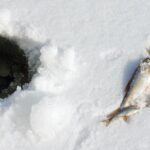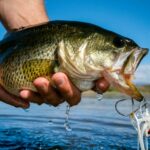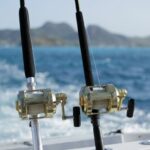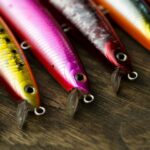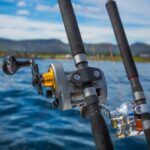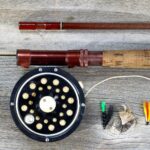There are plenty of fishing lures on the market, each available in various sizes, colors, and materials to give anglers more choices. However, why is it so important to use a lure to attract fish, and what are the differences in the types of fishing lures?

Here’s what you should know about fishing lure types, how they differ from natural bait, and how they help with attracting fish.
What Is a Fishing Lure?
A fishing lure is a solid, reusable attachment for a fishing rod designed to imitate a fish’s food and attract them to the line. Fish aren’t very smart and tend to pursue things they recognize as food, so bringing them toward a hook is one of the most effective ways of catching them.
Lures are available in various sizes, shapes, and colors. Fish have different preferences, so lures aim to match those preferences at various times, depths, and seasons. Many lures use metal or soft plastics, but you may also see cork, rubber, and wood as options.
Artificial lures are popular because they can replace the need to find or bring bait fish on a trip. Natural bait can also work well, but since it’s consumed on use, that can be a poor choice for longer trips.
16 Types of Fishing Lures
Here are some of the most popular fishing lures on the market, from soft plastics and flashers to chatterbait and scented options.
Buzzbaits

Buzzbaits are topwater lures consisting of two parts: a blade and a collection of strings. The blade disturbs the water as it passes and reflects light like fish scales, while the strings behind it disturb the water more and get attention. White options are best in clear water because they resemble the undersides of fish, while black works for murky water.
Buzzbaits are particularly popular when fishing for largemouth bass and similar fish. Predatory fish always like something that resembles prey, and the classic buzzbait is effective in this role. Try using them at first and last light when bass fishing is most likely to succeed.
Some people attach other baits alongside buzzbaits for added effect.
Chatterbaits

Chatterbaits look similar to buzzbaits at first, but there are some differences to note. Rather than having the blade above, chatterbaits have it placed directly in front of their skirt. The blade vibrates to the sides as it moves, creating a lot of vibration.
Rather than floating on the surface, chatterbaits work best in shallow water, especially if you cast them into grassy areas or murky water. While they require some precision, they work well for bass throughout the year, especially in late winter and throughout spring.
Flashers
Flashers are reflective pieces of metal or plastic that go ahead of a primary lure to grab the attention of aggressive species like salmon and trout. The reflections of light help attract fish that are inclined to think of the light as prey, while the bait behind the flasher holds their attention once they get close enough.
Flashers work well in both regular line fishing and fishing from a moving boat. However, it’s worth noting that many fishers prefer quick-release flashers that can pop off once you’re trying to reel a predatory fish in because the flashers can add some drag to the line.
Flashers are too reflective to appeal to fish that aren’t aggressive, so avoid these when looking for anything calmer.
Flies

Fly lures resemble insects, making them ideal for catching fish like trout. Unlike most types of fishing lures, fly lures are often made of unique materials to help reduce their weight. Popular options include feathers, threat, foam, and tinsel.
Fishing with flies takes more technique than using most other lures. They’re so light that they don’t act the same way in the water as other options, but a little practice should be more than enough to get you started.
Many anglers buy flies in many different shapes to help appeal to various fish species.
Jerkbaits

Jerkbaits are minnow-shaped lures that usually float horizontally and move with a shimmering style that indicates a struggling bait fish. They should go above the fish you’re trying to catch, so options exist for using these in shallow, mid-depth, and deep water. Jerkbaits are particularly effective on predatory fish like bass.
Using jerkbaits well requires some technique to mimic minnows. A good style is two counts of pulling, then one count of a rest. Jerkbaits often show more success if you’re pulling the bait rather than trying to rip it forward as you might with other bait options.
Jigs

Jigs are a weighted option among the different types of fishing lures. These include a lead sinker to move the hook down, then a softer lure with feathery decorations surrounding the hook. Many people attach a flasher nearby to help get more attention from aggressive fish.
Jigging is most effective on large, deep-water fish, where it consistently performs well. Proper jigging involves moving the bait up and down to entice targets to bite. However, jigging also requires extra strength to set the hook, as the jig itself creates resistance. Fishers often pick sizes and colors to resemble local prey fish.
Jigging is a low-energy technique, but it takes focus. Machines are available to help but tend to be expensive, so casual anglers often avoid this strategy.
Plugs

Plugs are hard-bodied baits available in various shapes and sizes, with the largest reaching around eight inches. The varying options work well on fish of most types, though it is important to get a size that matches the target.
A typical plug includes a hard but lightweight body, sometimes separated into two parts, and a thin sheet of metal that serves as a blade to change the movements. Plugs can also have two or three hooks to catch prey directly.
Plugs float on the water when still but dive a bit and wobble when a fisher reels them in. One of the most popular options is the Lucky 13 lure, the original design from inventor James Heddon after he noticed a bass in his pond striking at a piece of wood.
Scented
Scented baits are trickier than most other types. Fish often rely on smell because they can’t see through water any better than humans can, so by using scents to convince them that something is prey, fishers have more time to set hooks and haul them out. Sadly, many scented lures aren’t reliable.
An effective scent is water-soluble, whereas oil-based smells are unlikely to work well on fish. They also need a lure that’s sturdy enough to hold together but also porous enough to carry the scent, which can be tricky. Scented lures will also lose effectiveness over time, making them less reusable than some other options.
Scents are most effective on larger fish that look for prey. Insects rarely have much of a smell, so these lures aren’t as effective on anything likely to eat our buzzing friends. Berkeley Fishing’s scented bait is an excellent example of science-based scented lures that work. Soft plastics often work better for scented lures than harder baits.
Spinnerbait

Spinnerbaits are a combination of spoon lure and swimbait; both are described below. These feature one or more blades that revolve around as the lure moves, creating varying levels of reflection and vibration to gather attention. Spinnerbaits often hide hooks in the tail area to help catch anything that gets attention.
Spinnerbait works well on aggressive species, especially freshwater fish like bass, perch, and pike. Many include swivel systems that help prevent the line from spinning too much as the blade moves.
Using spinnerbait well can require some technique, as pulling it at the right speed is essential for making it move right. However, considering their versatility, spinnerbait isn’t likely to go out of favor anytime soon.
Spoons

Spoons are a simple and ancient lure that works best on large species like muskie, pike, and salmon. They mainly consist of a bent and colored piece of metal that wobbles back and forth to reflect light, with some hooks for catching their target.
Although not as fancy or intricate as bladed lures, spoons are still around because they’re cheap and reliable. They’re available in many colors and designs to help mimic potential prey fish. Spoons rely significantly more on reflection than vibration, so they’re best at times when there’s enough light to get noticed. This makes them a poor choice too early or late in the day.
Soft Plastics

Not every fish out in the water likes bait fish. Some prefer other foods like worms, and that’s where soft plastic baits enter the picture. These come in various shapes and sizes, and many have scent elements to help make them more attractive. The use is simple, with many soft plastic lures impaled on the fishing hook before being cast into the water.
Soft plastic baits work well for bass fishing, especially in the summer when you want to cast into areas with a lot of vegetation. Bass often prefer these areas because the water has more oxygen. Soft plastic lures also work well throughout the day, as soft plastics don’t rely on reflections as many other baits do.
Caught fish may end up swallowing soft plastic lures, so it’s important to keep that in mind and be careful if cutting into or eating their digestive system.
Surface Poppers

Surface poppers work well for bass fishing and seeking out similar species. They attract fish species by skimming along the surface, where their cupped face pushes water aside and creates noise and splashing sounds. Retrieving these usually happens slowly, helping the lure imitate the behavior of injured fish.
Poppers are available in many colors to match potential bait fish in the area, but the main reason many fishers enjoy them is that they provide more interactivity with the fish you’re trying to reel in. They also require more active focus and effort, so surface poppers are best for anglers who want to actively engage with fish instead of setting a rod and waiting for a bite.
Swimbaits

Swimbaits imitate fish by having one or more joints that separate the bait into sections, allowing it to duplicate the swimming motions of other fish. They can be hard or soft, with more joints usually meaning a smoother gliding action through the water.
Many fishers link swimbaits with other components like jig systems, spinnerbait, or chatterbait. Some swimbaits, especially soft-bodied ones, feature a style for pushing the line entirely through the bait. This helps stop caught fish from using the lure to try and dislodge the hook.
Swimbait is most effective on larger targets, so they’re popular with bass anglers. The need for joints means that making them too small would weaken their durability, so most swimbaits focus on catching larger, aggressive fish instead.
Trolling Skirts

Trolling skirts are a simple lure you can catch fish with. These come in various lengths but generally consist of one or more colors with multiple tendrils coming down from a head. More advanced lures, like buzzbaits, often have a trolling skirt as a component.
Trolling skirts can superficially resemble most fish that may be in an area, including things that technically aren’t fish, such as jellyfish or octopi.
Umbrella Rigs

Umbrella rigs are usually metal setups that allow you to attach several different lures to them, often jigs. Make sure to put the heaviest ones on the bottom and lighter jigs on top to prevent spinning. The center section should have a lure that’s different from the others and stand out for catching targets like trout.
One thing to note is that large umbrella rigs are illegal in many areas. You may need to limit yourself to three hooks or even dummy baits with no hooks to comply with local regulations.
Worms
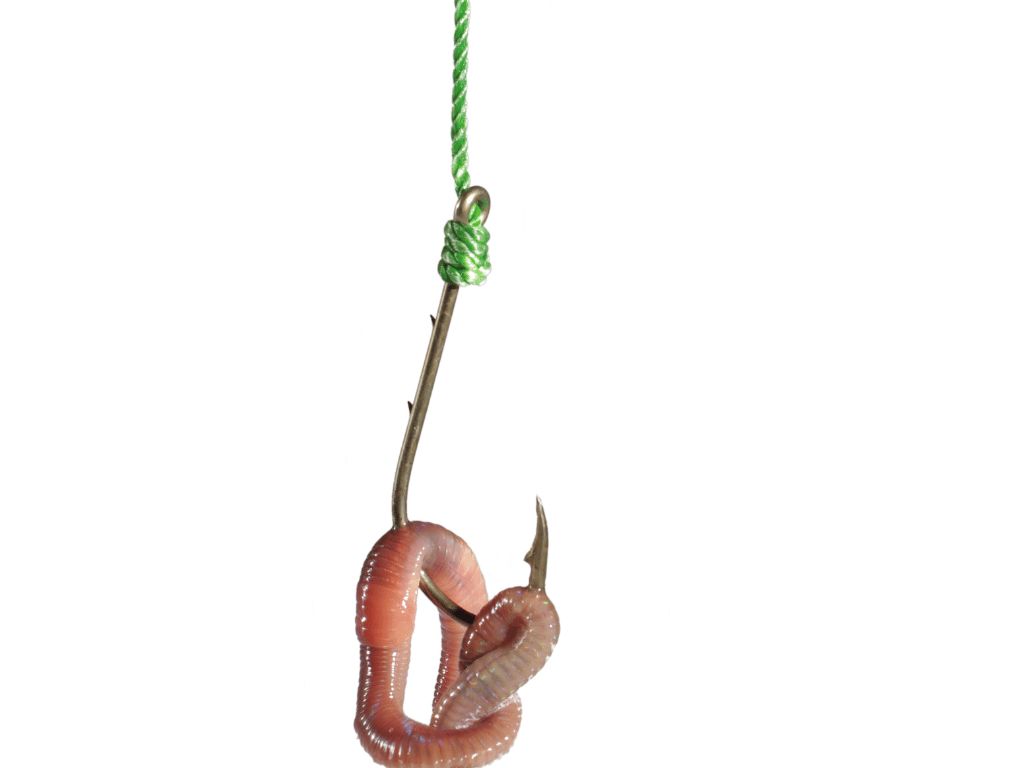
Worms are one of the most effective types of fishing lures. Although not always the best in every circumstance, they’re highly effective for things like bullhead, sunfish, bass, crappies, and trout. Worms have genuine food smells, erratic motions, and appealing visuals.
However, as worms are living bait instead of artificial options like everything else on this list, they require special care. It’s usually best to buy them just before you go fishing and carry them in an environment suitable for them until you can get to the lake.
Guide To Choosing a Fishing Lure
Here are some things to remember when choosing a fishing lure for your situation.
Location
Factors such as water type and depth influence which type of fish are there. The outside edges of bends, behind rocks in flowing water, and the shade of trees can all be excellent places to fish, as New York’s Department of Environmental Conservation explains.
Ideally, you want to select a lure that matches the type of fish you suspect to be in the area. Finding something that looks like their food increases the chance they’ll take your bait.
Conditions
Conditions affect where fish go and, therefore, which lures to use. When it’s cooler out, it’s best to try fishing near the surface. When it’s warmer, many fish dive deeper, so pick something like a jig or a worm.
Weight and Size
As a general rule, pick a larger and heavier lure if you’re trying to catch a bigger fish. Animals can be unpredictable, and sometimes large fish go for small lures, but the most reliable lures resemble what a fish is used to eating.
Heavier lures like jigs are most effective for bottom-feeding fish, while lighter ones have an easier time staying near the surface and catching smaller fish who feel comfortable attacking them.
Color
Using the right color can help lure in target fish. Color is most important when fishing in clear water, and your targets can see the bait. Good color contrast helps mimic prey, and many lures have designs that specifically match the species that your target fish eats.
Color isn’t as important when fishing in darker or murkier environments. Vibrations tend to matter more there, so options like chatterbait will go much further. There’s essentially no end to the color variations in lures.
Fishing Lure Tips
Here are some quick tips for using fishing lures effectively.
Attaching a Fishing Lure
Attaching a fishing lure gets easier with practice. There are four main components of most lure setups outside the lure itself:
- Barrel swivels let components rotate independently
- Dipsys let you adjust the weight and, therefore, the depth of your lure
- Fishing lines link everything together
- Hooks snag the fish and let you pull them out
To tie a lure, pass your fishing line through the main hook on your lure. Rotate the end of the string several times around the main line, then pass it through the area between the hook eye and the first turn. Move the end of the string through the large loop, then moisten the line slightly and apply steady pressure to pull it closed along the main line. Trim off the excess.
This is the improved clinch knot, and it’s one of the most popular fishing knots. If you’re having trouble, here’s a video version to follow.
How To Use a Fishing Lure
The best way to use a fishing lure when fly fishing is to cast the lure out into the water and check areas by reeling it in. Lures often need unique movements to cast correctly, so you may have to practice with each lure until you get the hang of it. Generally, you want to cover as much distance as possible with each cast.
Once your lure is in the water, it’s time to start reeling it in. This usually involves making erratic movements and pulling in different directions to try and imitate the behavior of baitfish, which encourages your targets to strike. Once the fish bites, you want to try and hook it properly, then pull it out of the water.
Caring For a Fishing Lure
It’s always best to clean fishing lures after you use them. Wash them in fresh water to get rid of any dirt and dust. After cleaning with water, you can use mild dish soap and a paper towel to clean them more thoroughly. Remember to store any wet lures separately.
If you need more care, you can use a toothbrush for detailed cleaning. With proper care, most solid lures can last for decades as long as you store them in a dry, airtight environment.
Frequently Asked Questions
Here are some common questions people have about fly fishing and the many types of fishing lures.
What’s the easiest lure to use?
The easiest fishing lures to use are plastic worms. They’re disposable, don’t require special care, attract fish reasonably well, and don’t require special movements or reeling techniques to work. Plastic worms aren’t as effective as some other lures, but they still work reasonably well.
When should I use bait?
The best time to use bait instead of fishing lures is at night when you’re a beginner, it’s cold, or you need to catch a fish as soon as possible. Bait is effective because it’s real fish food, but handling live bait well can take practice.
How often should I replace a fishing lure?
The best time to replace a fishing lure is when it doesn’t seem to be catching fish in your area. Trying about ten casts per zone, and switching if you get no bites across the zone, is suitable for most beginners.
When should you avoid using a fishing lure?
Don’t use a lure that’s too heavy for your line. Lighter lines are better but weaker, so you need to manage your weight to stop the line from snapping. Also, some areas have additional rules on what lures you can use. Always follow local regulations.
Final Thoughts
There are so many fishing lure types available that it’s almost impossible to name all of them. However, while you can buy as many as you want, there’s no substitute for experience. Try going out and practicing with different lures. Once you experience their effect for yourself, you’ll have a much better understanding of when to use each one.
- Do You Need An Indicator For Nymph Fishing? - November 16, 2023
- Fishing Safety Tips For Families - September 25, 2023
- What Is The Best Time To Night Fish At A Lake? - September 18, 2023


